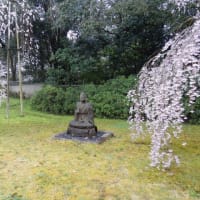
8 Islamic Civilization Versus European Civilization
According to Ichisada Miyazaki's theory of the Renaissance, the Early Modern Renaissance first occurred in West Asia in the 9th century, followed by the Chinese civilization in the 10th century, the Early Modern Renaissance in the Song Dynasty, the Crusades in the 12th century, and the world domination of the Mongol Empire in the 13th century. Later, the early modern Renaissance arose in 14th-century Europe.
As for how to understand the early modern period and the Renaissance, the period before that was the Middle Ages, and while the Middle Ages was the period of the nobility, the early modern period was the period of the common people, and the Middle Ages was the period of religion. On the other hand, the early modern period was an era of commerce, and I thought that the restoration of humanity in the classical revival was a phenomenon related to that. Ichisada Miyazaki saw the phenomenon of economic development empowering the common people and forming a culture based on the common people as a Renaissance phenomenon.
The cosmopolitan policy initiated by the Umayyad dynasty must have been behind the early modern phenomenon in the Islamic civilization. The unification policy of currency and language (Arab) by Abbul Malik (AC. 685-705) is that. Economic prosperity created the culture of Muslim commoners, and here again led to the rediscovery of Greek culture.
Seen in this way, the teachings of the Qur'an are rich in cosmopolitan elements, such as the teachings of monotheism, the idea of the Ummah*, and the idea of contracts . It provided an opportunity for unification in West Asia, and took time to promote unification. At first, it was a form of politics and tyranny, but through the reorganization of customary laws, social unification was gradually promoted.
※Umma
Muslims were commanded, as their first duty, to build a community (ummah) in which wealth was equitably distributed and compassion was practiced. This was far more important than any doctrine about God.
The situation in West Asia spilled over into Chinese civilization as refugees from Sassanid Persia fled east under the Islamic offensive. Internationalism in the Tang Dynasty overlapped with this, but after the Tang and the Five Dynasties and Ten Kingdoms period, the aristocratic society collapsed, and in the Northern Song Dynasty, when the Shidaifu rose to power, Chinese civilization entered the early modern period and a renaissance emerged, according to Miyazaki. I thought about it. If "Renaissance" means the democratization of society, then yes.
During the Five Dynasties and Ten Kingdoms period, something new was born, and the whole of China was about to become a unified market*, and the Northern Song Dynasty was a period of economic development. It was also an era of technological innovation and three major inventions (gunpowder, compass, and woodblock printing). But it would be difficult to make it as cosmopolitan as Islamic civilization. However, at that time, Chinese civilization itself was a world, and it may be possible to call this a cosmopolitan.
*All of China is a unified market
From the Song dynasty to the middle of the Qing dynasty, China's economy was in the Grand Canal era, with the population concentrated along the Grand Canal and huge commercial cities developing. The Grand Canal was the trunk line for domestic transportation, and the natural rivers that intersected with it became large and small branch lines, forming a nationwide transportation network.
During the Northern Song Dynasty, the nomadic peoples around them gained strength and strengthened nationalism. Islamic civilization and European civilization are characterized by their expansion through religion, and in that sense Chinese civilization has shown unique movements. Even in the Ming dynasty, which seems to be a repetition of the same era as the Song dynasty,* except for the era of the Yongle emperor, Chinese civilization has shown a stance of restraining expansion.
*Chinese History of the Ming Dynasty, like a repetition of the Song Dynasty
The history of the Ming dynasty has many parts that repeat the history of the Song Dynasty in particular.The Ming Empire that Taejo predicted would be a nation-state like the Song Dynasty, and the colonies where different races live would be a burden, so it was unnecessary. And from being a single nation state, isolationism was born .
Although it is religious, it is a characteristic of Indian civilization that it did not show a very expansive attitude, just like Chinese civilization. Although there was an aspect of development overseas, we can see that Indian and Chinese civilizations were self-contained through material or spiritual fulfillment within their own civilizations. There was a period of overseas expansion, but it may have been common, especially in Indian civilization, for the wealthy to withdraw from economic activities and retire. There seems to have been a morality different from the accumulation of capital in later European civilizations.
All rights reserved to M Ariake


























※コメント投稿者のブログIDはブログ作成者のみに通知されます